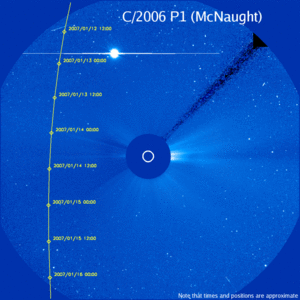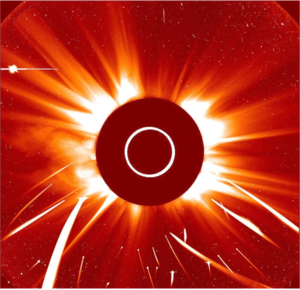Accept all cookies Accept only essential cookies See our Cookie Notice

About ESA
The European Space Agency (ESA) is Europe’s gateway to space. Its mission is to shape the development of Europe’s space capability and ensure that investment in space continues to deliver benefits to the citizens of Europe and the world.
Highlights
ESA - United space in Europe
This is ESA ESA facts Member States & Cooperating States Funding Director General Top management For Member State Delegations European vision European Space Policy ESA & EU Space Councils Responsibility & Sustainability Annual Report Calendar of meetings Corporate newsEstablishments & sites
ESA Headquarters ESA ESTEC ESA ESOC ESA ESRIN ESA EAC ESA ESAC Europe's Spaceport ESA ESEC ESA ECSAT Brussels Office Washington OfficeWorking with ESA
Business with ESA ESA Commercialisation Gateway Law at ESA Careers Cyber resilience at ESA IT at ESA Newsroom Partnerships Merchandising Licence Education Open Space Innovation Platform Integrity and Reporting Administrative Tribunal Health and SafetyMore about ESA
History ESA Historical Archives Exhibitions Publications Art & Culture ESA Merchandise Kids Diversity ESA Brand Centre ESA ChampionsLatest
Space in Member States
Find out more about space activities in our 23 Member States, and understand how ESA works together with their national agencies, institutions and organisations.
Science & Exploration
Exploring our Solar System and unlocking the secrets of the Universe
Go to topicAstronauts
Missions
Juice Euclid Webb Solar Orbiter BepiColombo Gaia ExoMars Cheops Exoplanet missions More missionsActivities
International Space Station Orion service module Gateway Concordia Caves & Pangaea BenefitsLatest
Space Safety
Protecting life and infrastructure on Earth and in orbit
Go to topicAsteroids
Asteroids and Planetary Defence Asteroid danger explained Flyeye telescope: asteroid detection Hera mission: asteroid deflection Near-Earth Object Coordination CentreSpace junk
About space debris Space debris by the numbers Space Environment Report In space refuelling, refurbishing and removingSafety from space
Clean Space ecodesign Zero Debris Technologies Space for Earth Supporting Sustainable DevelopmentLatest
Applications
Using space to benefit citizens and meet future challenges on Earth
Go to topicObserving the Earth
Observing the Earth Future EO Copernicus Meteorology Space for our climate Satellite missionsCommercialisation
ESA Commercialisation Gateway Open Space Innovation Platform Business Incubation ESA Space SolutionsLatest
Enabling & Support
Making space accessible and developing the technologies for the future
Go to topicBuilding missions
Space Engineering and Technology Test centre Laboratories Concurrent Design Facility Preparing for the future Shaping the Future Discovery and Preparation Advanced Concepts TeamSpace transportation
Space Transportation Ariane Vega Space Rider Future space transportation Boost! Europe's Spaceport Launches from Europe's Spaceport from 2012Latest
Comet C/2023 A3 brightens SOHO’s week
Thank you for liking
You have already liked this page, you can only like it once!
From 7 until 13 October 2024, ESA/NASA’s SOHO spacecraft recorded Comet C/2023 A3 (Tsuchinshan–ATLAS), the second brightest comet it has ever seen. Meanwhile, large amounts of material were being spewed out by the Sun (covered in the centre), and planet Mercury is visible to the left.
Comet C/2023 A3 was seen for the first time early last year. It most likely came from the distant Oort cloud.
The comet reached an estimated peak brightness just beyond –4 magnitude. (The more negative the visual magnitude value, the brighter the object.) Of the more than 5000 comets SOHO has seen flying past the Sun, only Comet C/2006 P1 (McNaught) was brighter, with a visual magnitude of –5.5.
SOHO’s location between the Sun and Earth gave it a front-row seat, but the same comet has been visible from Earth every evening since 12 October 2024. Throughout October, as the comet moves farther away from the Sun, it will gradually grow fainter and rise higher up in the western sky.
The week that SOHO watched Comet Tsuchinshan–ATLAS was also a wild one in terms of space weather. The Sun unleashed no less than 4 X-class flares (the highest intensity type of flare), 28 medium-intensity M-class flares, and 31 coronal mass ejections – the latter being visible as white clouds of material in the video. All this activity led to two geomagnetic storms on Earth, resulting in beautiful auroras lighting up the night sky.
SOHO, short for Solar and Heliospheric Observatory, is a joint ESA-NASA mission to study the Sun. For almost 29 years now, it has been watching the Sun itself as well as the much fainter light coming from the Sun’s outer atmosphere, called the solar corona. The data shown in this video were taken by the LASCO C2 (red) and C3 (blue) coronagraph instruments.
The comet is so bright that it partially saturated SOHO’s sensor. Click here for a differently processed video where more of the comet’s structure is visible. The comet appears to slow down around 10 October because the image cadence of SOHO’s cameras was increased.
-
CREDIT
SOHO (ESA & NASA) -
ACKNOWLEDGEMENTS
Daniel Müller -
LICENCE
CC BY-SA 3.0 IGO or ESA Standard Licence
(content can be used under either licence)
-
Closed captions available Captions and subtitles are available (automatically generated by YouTube) - select your language using the YouTube player controls. A non-YouTube version is available using the 'download' button above.
-
Animation
-
-
-

Comet C/2023 A3 brightens SOHO’s week

Track of comet McNaught through SOHO's coronagraph LASCO C3

SOHO’s comet encounters

Citizen scientist discovers Sun-watcher SOHO’s 4000th comet















 Germany
Germany
 Austria
Austria
 Belgium
Belgium
 Denmark
Denmark
 Spain
Spain
 Estonia
Estonia
 Finland
Finland
 France
France
 Greece
Greece
 Hungary
Hungary
 Ireland
Ireland
 Italy
Italy
 Luxembourg
Luxembourg
 Norway
Norway
 The Netherlands
The Netherlands
 Poland
Poland
 Portugal
Portugal
 Czechia
Czechia
 Romania
Romania
 United Kingdom
United Kingdom
 Slovenia
Slovenia
 Sweden
Sweden
 Switzerland
Switzerland



























